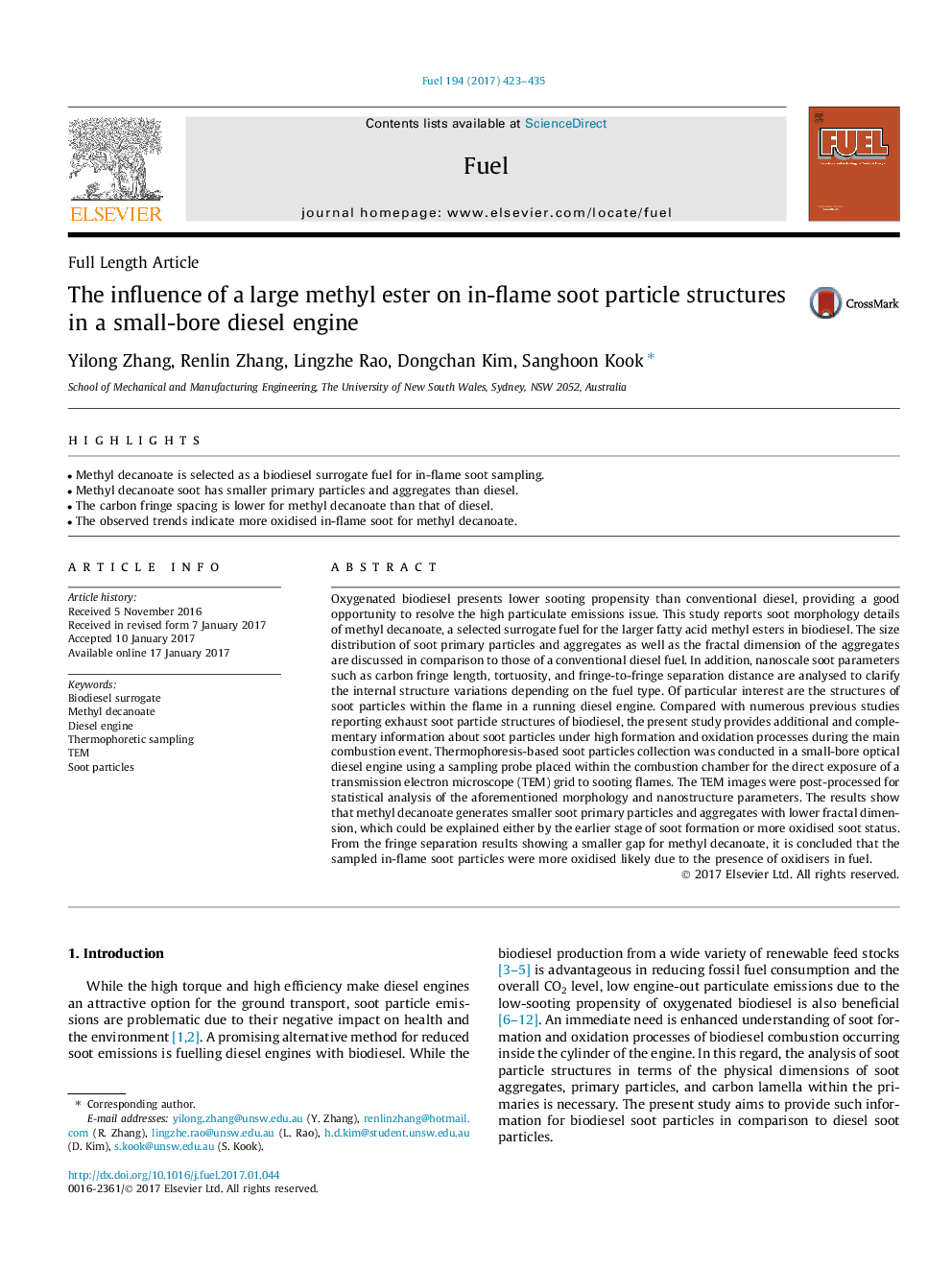| Article ID | Journal | Published Year | Pages | File Type |
|---|---|---|---|---|
| 6475509 | Fuel | 2017 | 13 Pages |
â¢Methyl decanoate is selected as a biodiesel surrogate fuel for in-flame soot sampling.â¢Methyl decanoate soot has smaller primary particles and aggregates than diesel.â¢The carbon fringe spacing is lower for methyl decanoate than that of diesel.â¢The observed trends indicate more oxidised in-flame soot for methyl decanoate.
Oxygenated biodiesel presents lower sooting propensity than conventional diesel, providing a good opportunity to resolve the high particulate emissions issue. This study reports soot morphology details of methyl decanoate, a selected surrogate fuel for the larger fatty acid methyl esters in biodiesel. The size distribution of soot primary particles and aggregates as well as the fractal dimension of the aggregates are discussed in comparison to those of a conventional diesel fuel. In addition, nanoscale soot parameters such as carbon fringe length, tortuosity, and fringe-to-fringe separation distance are analysed to clarify the internal structure variations depending on the fuel type. Of particular interest are the structures of soot particles within the flame in a running diesel engine. Compared with numerous previous studies reporting exhaust soot particle structures of biodiesel, the present study provides additional and complementary information about soot particles under high formation and oxidation processes during the main combustion event. Thermophoresis-based soot particles collection was conducted in a small-bore optical diesel engine using a sampling probe placed within the combustion chamber for the direct exposure of a transmission electron microscope (TEM) grid to sooting flames. The TEM images were post-processed for statistical analysis of the aforementioned morphology and nanostructure parameters. The results show that methyl decanoate generates smaller soot primary particles and aggregates with lower fractal dimension, which could be explained either by the earlier stage of soot formation or more oxidised soot status. From the fringe separation results showing a smaller gap for methyl decanoate, it is concluded that the sampled in-flame soot particles were more oxidised likely due to the presence of oxidisers in fuel.
